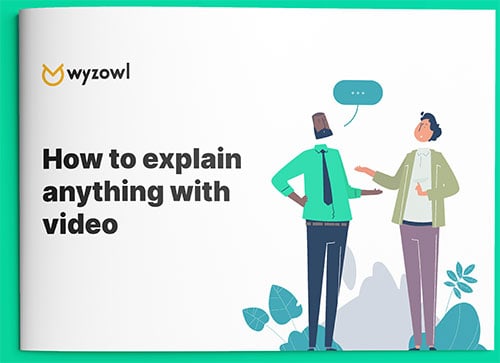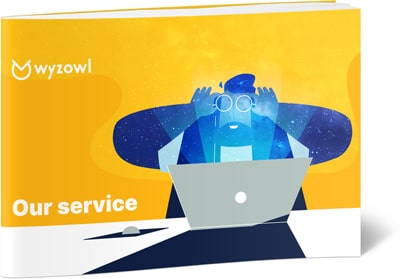Last updated on 25th October 2023
Stories: they’re how we make sense of the world. From a young age, stories captivate and teach us our most valuable lessons. They frame the values that are most important to us. They help drive us forward in our daily lives. And, crucially, they help dictate what we really care about.
And that gets to the nub of it. Stories make people care.
It’s hard enough for brands to grab attention in an increasingly noisy world.
If you don’t have a great story? Forget about it.
But what is your story? It isn’t always easy to formulate. Business storytelling is super important and very complex.
In this post, based on our experience helping thousands of companies frame and tell their unique story, we’ll run through 7 powerful tips we’d recommend when it comes to working out yours.
What is business storytelling?
Business storytelling is a series of techniques that help brands communicate their story: why they exist, who they’re for, and what purposes they serve. These stories build awareness, loyalty and trust – making audiences feel connected, engaged, and interested.
1. Define your customer transformation
Every business is a transformation: a journey from state A, to an improved state B.
Get clear about what this transformation is, and make it super clear for your audience, too: that’s the bread and butter of your story.
A brand that does this really well is SEO tool Ahrefs. We’re talking about an advanced piece of software with many nuances and complexities – but what they encapsulate on their home page and many other parts of their top-level marketing is the transformation: Everything you need to rank higher and get more traffic. Simple as that!

Getting clear and serious about this transformation is a direct route into the psychology of their target user, and really leaves no doubt about what this product is and why it exists.
Clearly defining this transformation in a simple, memorable way is key – and it’ll help people get right to the core of what your brand is, who it’s for – and what it’s going to help them achieve.
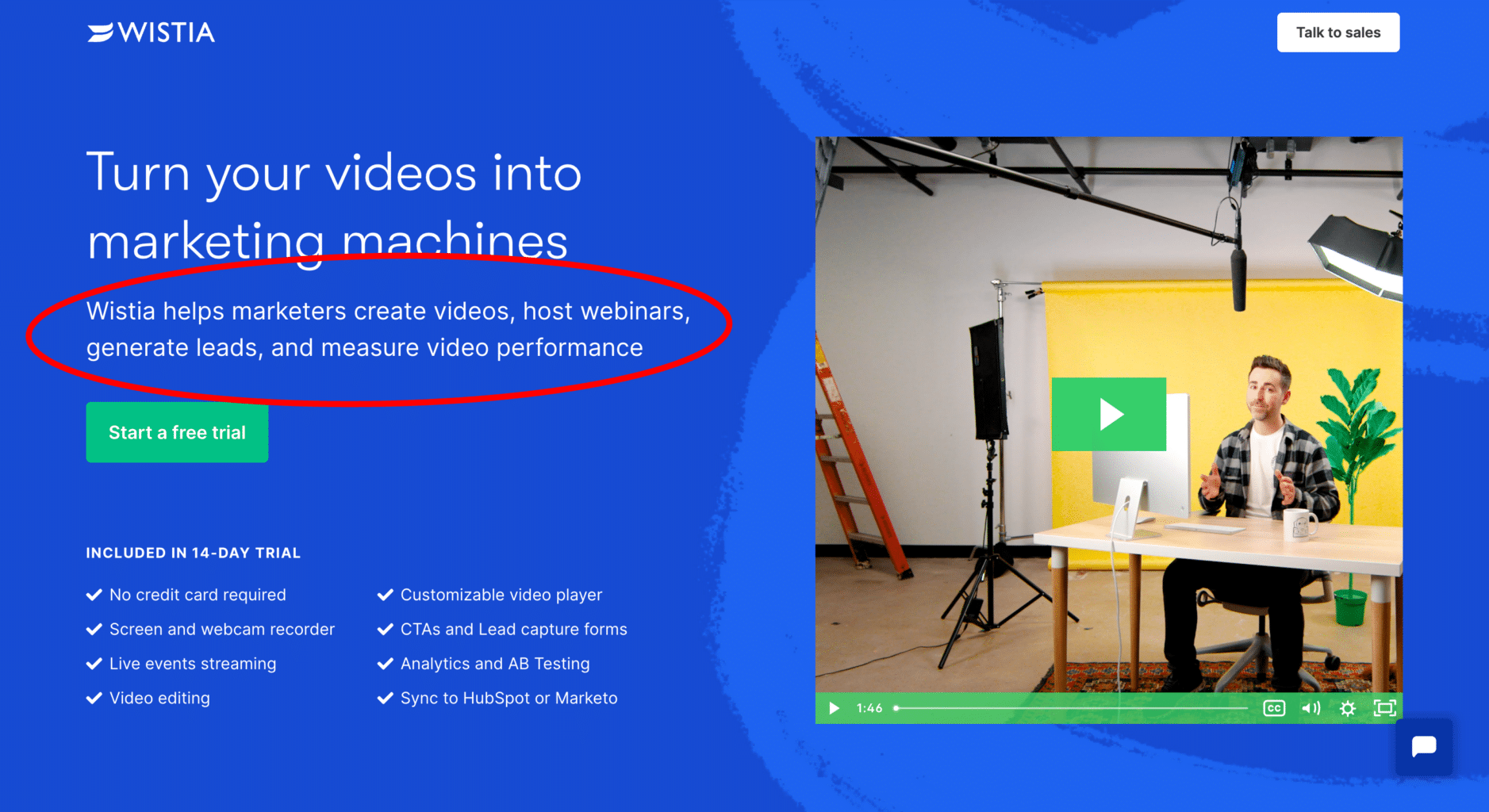
Use vivid language and avoid generic claims. Get specific on who you help and how you improve their lives. This is your chance to strike a chord – and differentiate from the competition.
Where possible, isolate the emotional impact of this transformation: the best stories are the ones that inspire emotion and feeling.
Paint a picture of how your customer feels before and after working with you. Speak with personality.
For example, you’d struggle to find an industry quite as dry as workwear – it’s plain clothes, with your company logo slapped on, right? So what makes YesFriends better? It’s company merch that’s so good, they’ll wear it at the weekend. Simple, but memorable!

This is a great starting point for bringing that journey to life.
2. Get clear about your ‘why’
It’s not enough to just exist – if it ever was, then it certainly isn’t anymore.
Great product, great pricing and great basics will get you far – but it’s also important to identify why you’re doing this, why you started up, why your people come to work every day.
An archetypal example of this approach – love ’em or hate ’em – is Innocent Drinks. Their brand story absolutely bursts with purpose. Great product, yes – that’s a given. But also great for the planet: a part of their story that’s existed from day one, and still lives and breathes within the essence of their brand.
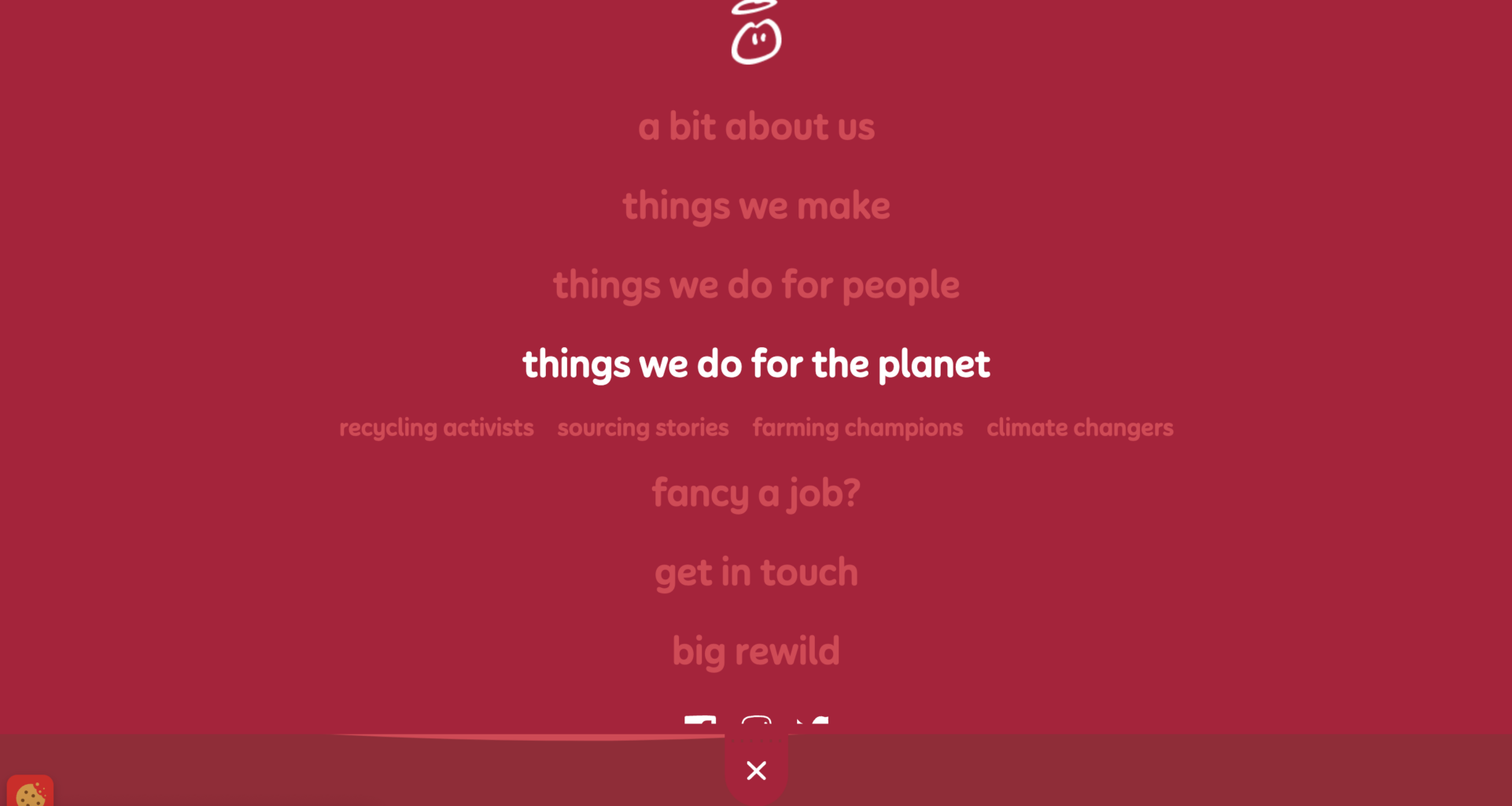
For example, TOMS Shoes’ why is to improve lives through business. Their buy-one-give-one model gives shoes to children in need. This noble mission is core to their brand story and identity. The idea of helping yourself and others through purchasing their product is woven through their marketing, with the slogan ‘Wear Good.’
But it doesn’t have to be some global, generational mission like saving the planet. In fact, if that’s NOT your why, then it’s inauthentic and counterproductive to pretend it is.
Instead, you can simply get super clear about who you set out to help and why: Salesforce do a great job of this.
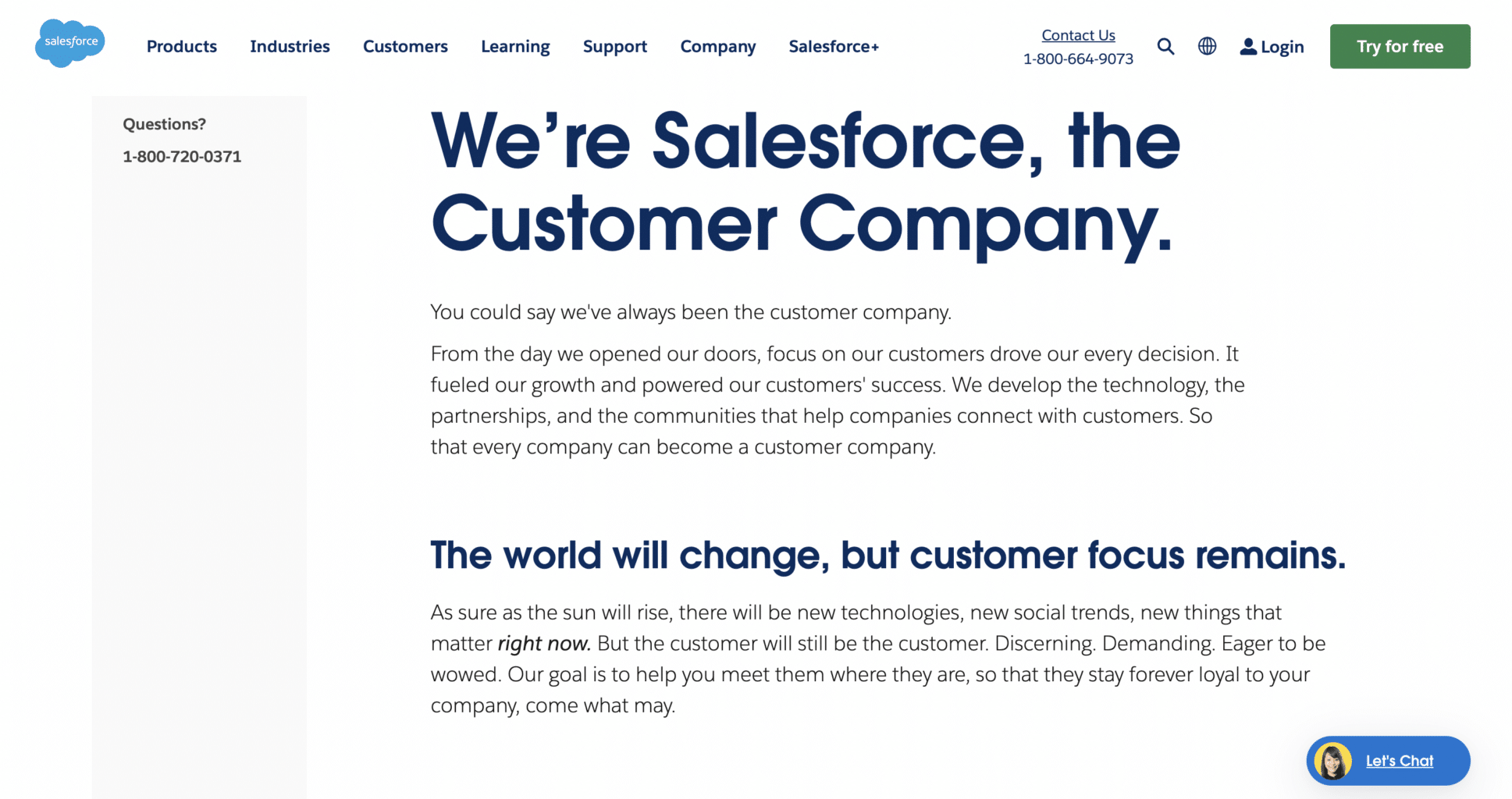
So what’s your vision for the changed, improved world as you want it to be?
What greater purpose does your company serve?
Why does your work matter?
Answering these big questions provides a meaningful context for everything you do.
Getting crystal clear on your ‘why’ can be inspiring for your team and give customers another reason to care about you.
3. Separate what’s REALLY important
In an age of shrinking attention spans, people don’t want particularly long stories about your brand. In fact, winning is about keep it short and sweet and memorable.
This does require separating the ‘really important’ from the ‘not so important.’ And unfortunately that often means recategorising stuff you think is really important, but simply doesn’t matter to your audience.
Identify the core narrative that runs through your origin story, values, mission and products/services and drill it down, drill it down, drill it down, until it’s so short and punchy it practically punches your audience in the face.
Resist the urge to share every detail and tangent. Prioritise the most crucial elements of your story. A good starting point might be…
- Founding story: How and why you started
- Values: What you believe in
- Mission: Your vision for change
- Impact: The difference you make
And like the classic elevator pitch, try and create different versions of this.
One that you can deliver in a sentence or two, one that takes 3 minutes, one that takes 5, one that takes 10, etc.
We all have interesting stories to tell. But we must focus on telling stories that people will hear. And that means being ruthlessly concise.
4. Get customers involved
The old saying goes that your brand is what other people say about you when you’re not in the room.
As tempting as it is to frame your own story entirely in your own terms, it’s important to bring in the experiences of your customers and understand what your story is to them, and how that interplays with their own story.
Conduct customer interviews and surveys to learn:
- Why they needed your product/service
- What drew them to your brand over others
- How you met/exceeded their expectations
- How you positively impacted them
This outside-in perspective lends authenticity and helps shape a story that resonates, because it corresponds with the real, lived experiences of your customers.
Weave in direct customer quotes and real-life stories to showcase their journey.
This social proof is far more convincing than claims you make about yourself – although, hopefully, there’s plenty of overlap!
One brand that excels when it comes to essentially letting customers write their copy is Design Academy, as explained in this awesome blog post. To summarise – every time someone signs up to their free email course, they’re asked the same question: What is your biggest frustration with design?

Responses are then logged and categorised in a Google Sheet.

And, finally, excerpts from those quotes are directly used in marketing. Speaking the customers’ language, manipulating their concerns and frustrations – and becoming that much more compelling as a result.

5. Build – and use – evidence
Perhaps an extension of the previous point – but this is more of an ongoing exercise rather than an exercise in defining your story.
It’s not enough to just ‘say’ your story. You have to constantly seek and display evidence that it’s true.
In the previous point we talked about soliciting the thoughts and ideas of your customers and what your brand means to them.
This step is about validating the impact of your brand and product and actually laying that impact bare throughout your story.
A good example is Slack: right on their home page, you’ll find customer data demonstrating that 85% of users say Slack has improved communication, 86% feel their ability to work remotely has improved, and 88% feel more connected to their teams. These are really important metrics and very impressive stats.
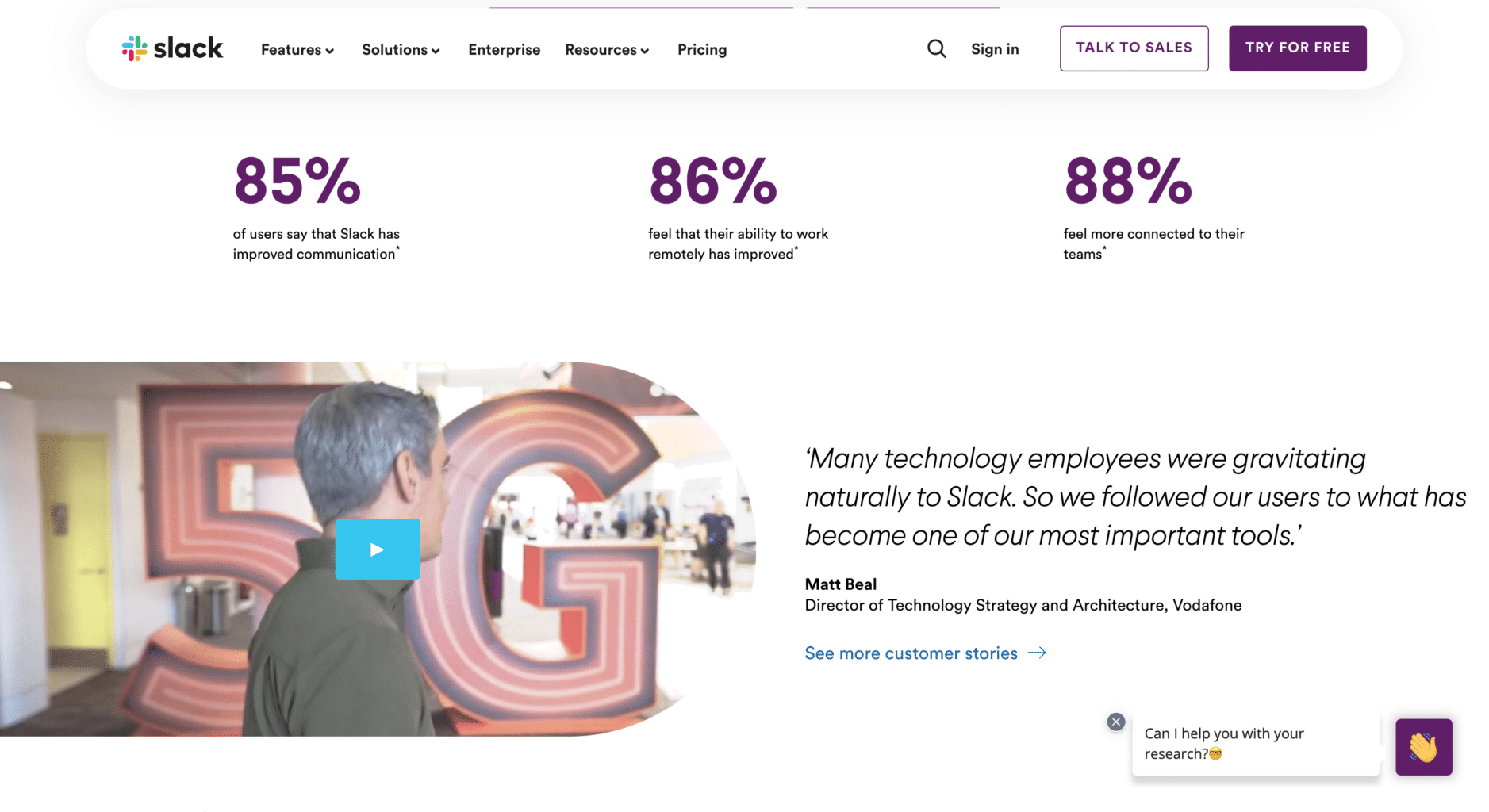
Customer stories, case studies, reviews and testimonial videos, are among the best ways to back up your story and lend credibility. Make sure to:
- Ask for feedback through surveys and conversations.
- Create testimonials and case studies to showcase success stories.
- Use and promote this content on your website, social media, and in sales materials. Arm your sales team with evidence!
The more proof you have, the more convincing your story becomes. Don’t just state you have 5-star service – sprinkle in quotes, stats, and stories that demonstrate this in action.
6. Use the right content
While written content like blogs and website copy have their place, video is one of the most compelling mediums for telling your brand story.
Video allows you to literally show your story unfold through moving images. You can introduce characters, settings, challenges, solutions, emotions, transformations, and more in an immersive cinematic way.
Animated video, particularly, gives you total control over every aspect of what’s on screen so you can create something that vividly tells your story in a way that matches your brand down to the ground.
7. Be consistent
Consistency is everything when it comes to business storytelling.
This means your story has to be known and understood throughout your business: get your team on board with your story and aligned around telling, and living, it consistently.
Make sure your messaging and visual identity aligns across channels.
Apply your story properly through your branding, brand voice, design, etc. to make it authentic and memorable.
Your website copy, social media, ads, sales presentations, etc. should all feel cohesive. This repetition and consistency cements your story in people’s minds. Don’t confuse them with mixed messages!
Crafting a compelling business story takes time and refinement. Use these tips to shape, strengthen and share yours. With an authentic, evidence-backed narrative, you can stand out from the crowd and connect on a deeper level with customers.
Remember, facts tell but stories sell.
Time to get to it…
So, time to start telling your story! The decisions you make here will have a huge impact, but – of course – you can also tweak things along the line.
Use things like A/B testing and customer feedback surveys to try and understand what’s resonating with your audience, and keep iterating until you have the strongest brand story possible.
This stuff doesn’t take care of itself: it takes practice, craft, rehearsal and plenty of editing. Use some of the tips in this article and you’ll be on your way.
And if you need some help telling your story? Our expert team of storytellers is just one contact form away!






